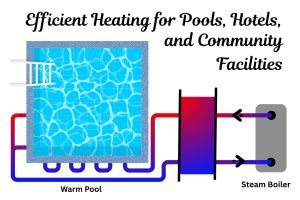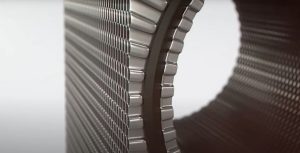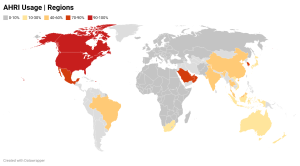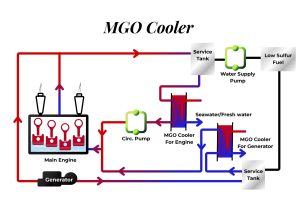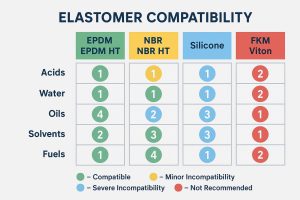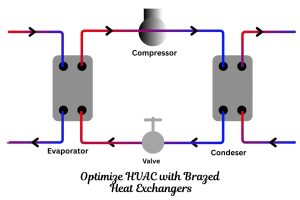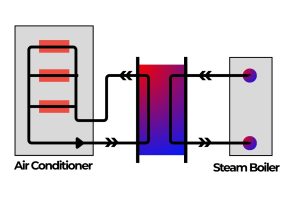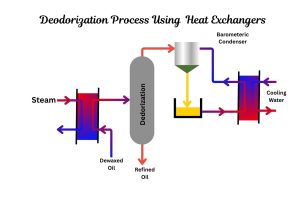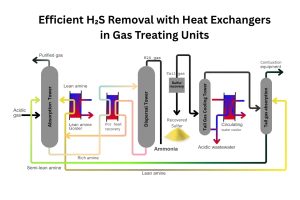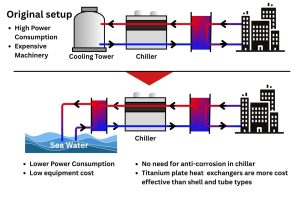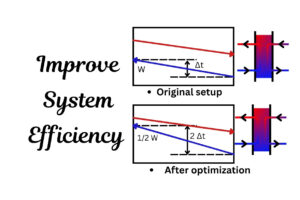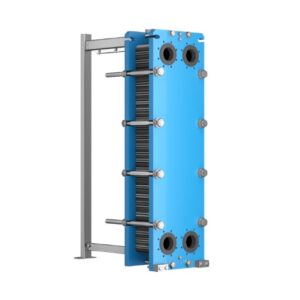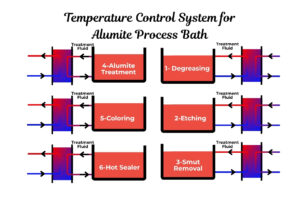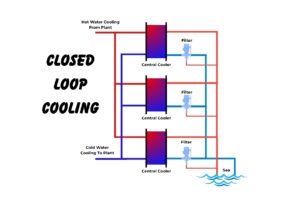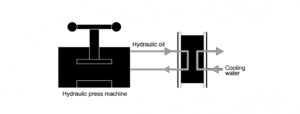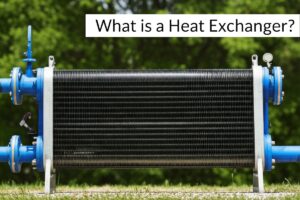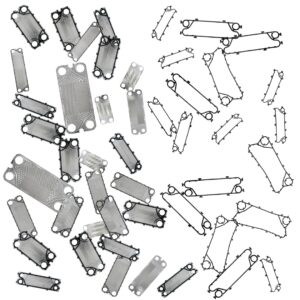What Should You Know Before You Buy a Heat Exchanger?
Have you ever wondered how your building stays warm in the winter and cool in the summer? Or how industries from food processing to power generation manage extreme temperatures with pinpoint precision? The unsung hero behind these critical processes is the heat exchanger, a device dedicated to one simple, yet vital, task: transferring thermal energy from one fluid to another without them ever mixing.
But the world of heat exchangers is far from simple. Choosing the right one—whether you’re sourcing a large-scale industrial unit, a compact rooftop heat exchanger, or a replacement part for a specific model like an Alfa Laval M6—is a major decision. The cost of a heat exchange system is not just the sticker price; it involves understanding the long-term performance, maintenance needs, and the availability of quality spare parts.
This guide is designed for everyone, from procurement managers and engineers to distributors and manufacturers. We’ll use simple language to demystify this essential technology. We’ll explore its fascinating history, break down the different types, and uncover the common mistakes you need to avoid. Most importantly, we’ll show you how to make an informed decision that saves you money and keeps your operations running smoothly.
Where Did the Idea for Heat Exchangers Come From?
Believe it or not, the concept of heat exchange isn’t a modern invention. The earliest, most basic forms can be traced back to the Roman Empire. The Romans used a system called a “hypocaust” to heat their famous baths and villas. It involved a furnace generating hot air that circulated through a space under the floor and inside the walls, effectively warming the structure. They were transferring heat from the hot air to the building without mixing the two—the core principle of a heat exchanger.
The science, however, didn’t truly take shape until the Industrial Revolution. James Watt’s steam engine in the late 18th century, with its separate condenser to turn steam back into water, was a monumental leap forward. This was one of the first industrial applications of a device designed specifically for heat transfer.
The 19th and early 20th centuries saw an explosion of innovation.
- The 1800s: The first patent for a plate-style heat exchanger was awarded in Germany in the 1870s. Around the same time, the “shell and tube” design emerged, which consisted of a bundle of tubes inside a larger outer shell. This design became a workhorse for the burgeoning power and oil industries.
- The 1920s & 30s: Dr. Richard Seligman’s invention of the first commercially successful plate heat exchanger in 1923 revolutionized industries like brewing and dairy. It was perfect for applications like pasteurization, where gentle, efficient heating was crucial. Companies that are now industry giants, like APV and Alfa-Laval, introduced their first models during this era. Brands like GEA also have roots in this period, with Otto Happel’s work on air-cooled condensers laying the groundwork for future technologies.
From these early innovations, a vast array of designs has emerged, each tailored to specific and demanding applications. This evolution continues today, driven by the need for greater efficiency, sustainability, and performance in a world that depends on precise thermal control.
What Are the Different Types of Heat Exchangers?
When you’re in the market for a heat exchanger, the options can seem overwhelming. Each design offers a unique set of advantages depending on the pressure, temperature, fluid types, and space constraints of your application. Understanding the fundamental types is the first step toward making a smart choice.
Is a Gasketed Plate Heat Exchanger (GPHE) Right for Me?
This is one of the most versatile and popular designs. A GPHE consists of a series of thin, corrugated metal plates clamped together in a frame. Each plate is fitted with a gasket, which creates a seal and directs the two fluids into alternating channels.
- How it Works: The hot and cold fluids flow on either side of the plates, and the large surface area created by the corrugations allows for incredibly efficient heat transfer.
- Best For: HVAC, food and beverage, dairy, marine applications, and chemical processing. They are ideal when you need flexibility and easy maintenance.
- Advantages: High thermal efficiency, compact size, and the ability to easily add or remove plates to change capacity. Maintenance is straightforward since the unit can be opened for cleaning and gasket replacement.
- Considerations: The gaskets are a wearing part and will eventually need replacement. They are also limited by temperature and pressure constraints based on the gasket material.
When Should I Consider a Welded Plate Heat Exchanger?
For applications involving aggressive fluids, extreme temperatures, or high pressures, a welded design is often the superior choice. Instead of gaskets, the plates in these units are welded together to form a secure, leak-proof block.
- How it Works: The welded design eliminates the need for gaskets, allowing it to handle conditions that would cause a GPHE to fail.
- Best For: Oil and gas, petrochemicals, refineries, and demanding chemical industries where fluids are corrosive or system conditions are extreme.
- Advantages: Exceptional durability and safety. They can handle very high pressures and temperatures without the risk of gasket failure. They are also very compact.
- Considerations: Because they are welded, these units cannot be opened for mechanical cleaning. Chemical cleaning is the only option, which may not be suitable for all types of fouling.
What About a Shell and Tube Heat Exchanger?
The classic workhorse of the industrial world. As the name suggests, this type features a bundle of tubes enclosed within a larger cylindrical shell. One fluid runs through the tubes while the other flows over them within the shell.
- How it Works: Heat is transferred through the walls of the tubes. The design is robust and can be built to handle very high pressures and heavy fouling.
- Best For: Oil refineries, large-scale chemical production, and power generation. They are particularly good for high-pressure applications and when dealing with fluids that might contain solid particles.
- Advantages: Extremely robust and reliable. They can be designed for very high pressures and are easier to clean on the tube side if heavy fouling is expected.
- Considerations: They are much larger and heavier than plate heat exchangers for the same thermal duty. Their thermal efficiency is also generally lower.
Are There Other Specialized Types?
Yes, many other designs exist for niche applications. For instance, rooftop heat exchanger units, often used in large commercial HVAC systems, are typically air-cooled exchangers designed for outdoor installation. Brands like Daikin heat exchanger and Sesino heat exchanger are often associated with HVAC and refrigeration applications. Other specialized types include spiral heat exchangers, which are excellent for handling fluids with solids, and compact brazed units used in refrigeration cycles.
How Can I Avoid Common and Costly Heat Exchanger Mistakes?
Even the best heat exchanger can fail if it’s not properly selected, installed, and maintained. Avoiding a few common pitfalls can save you from expensive downtime, poor performance, and premature equipment failure.
Mistake #1: Choosing the Wrong Materials
The materials used for plates and gaskets are critical. Using a gasket material that isn’t compatible with your process fluid can cause it to swell, harden, or degrade, leading to leaks. Similarly, choosing a plate material that corrodes will destroy your heat exchanger from the inside out.
- How to Avoid It: Always provide your supplier with a complete chemical breakdown of your process fluids, including concentrations and operating temperatures. An expert can then recommend the right materials, whether it’s stainless steel, titanium, or a more exotic alloy for the plates, and NBR, EPDM, or Viton for the gaskets.
Mistake #2: Incorrect Assembly After Maintenance
When you open a gasketed plate heat exchanger for cleaning or re-gasketing, the plate pack must be reassembled in the exact same order and orientation. Misplacing even a single plate can block flow, reduce performance, or even cause catastrophic failure when the unit is re-pressurized.
- How to Avoid It: Before disassembly, mark the plate pack with a diagonal line so you have a visual guide for correct reassembly. Always follow the assembly drawing provided by the manufacturer. Crucially, tighten the clamping bolts evenly and only to the specified closing dimension. Over-tightening can damage the plates permanently.
Mistake #3: Ignoring Leaks
A small leak might seem like a minor annoyance, but it’s always a symptom of a larger problem. An external leak often points to a failing gasket. An internal leak, where the two fluids mix, indicates a perforated plate.
- How to Avoid It: Deal with leaks immediately. An external leak might be fixed by carefully tightening the unit to its correct dimension, but it usually means the gaskets are due for replacement. An internal leak is a critical failure. The unit must be shut down immediately to prevent contamination and the damaged plate must be found and replaced.
Mistake #4: Neglecting Regular Cleaning and Inspection
Fouling is the gradual buildup of deposits on the plate surfaces, and it is the enemy of efficiency. It acts as an insulator, drastically reducing heat transfer and increasing the pressure drop, which makes your pumps work harder and consume more energy.
- How to Avoid It: Implement a regular maintenance schedule based on your operating conditions. Monitor the temperatures and pressures across the unit; a decrease in performance or an increase in pressure drop is a clear sign that cleaning is needed. Regular visual inspections of gaskets and frames can also help you spot potential issues like cracks or corrosion before they become serious problems.
What Factors Determine the Heat Exchange System Cost?
The initial purchase price of a heat exchanger is only part of the story. The true heat exchange system cost is the total cost of ownership over the unit’s entire lifecycle. Understanding these factors will help you make a more cost-effective decision in the long run.
- Type and Size: A large, high-pressure shell and tube exchanger for a refinery will naturally cost more than a small GPHE for an HVAC application. The required heat transfer area is the primary driver of size and initial cost.
- Materials of Construction: This is a huge cost factor. Standard stainless steel (304 or 316) is the baseline. If your application requires titanium, Hastelloy, or other exotic alloys to resist corrosion, the price can increase dramatically.
- Brand and Origin: Well-known premium brands often come with a higher price tag. This cost can sometimes be justified by extensive R&D and support, but it’s not always necessary. High-quality alternatives often exist that provide comparable performance for a fraction of the cost, especially for spare parts.
- Operating Costs: This is where the long-term cost really adds up. An efficient design will consume less energy because pumps won’t have to work as hard to overcome pressure drops. A poorly chosen unit with high fouling tendencies will lead to higher cleaning costs and more downtime.
- Maintenance and Spare Parts: This is a critical and often overlooked factor. Gaskets and plates are consumable parts that will need to be replaced. The availability and cost of these parts can significantly impact your total cost of ownership. This is particularly true for equipment from major manufacturers like Kelvion heat exchangers or a GEA heat exchanger, where OEM parts can be very expensive.
Why Should You Consider Aftermarket Spare Parts for Your System?
This brings us to one of the most important decisions you’ll make in managing your heat exchanger assets: sourcing spare parts. While OEM (Original Equipment Manufacturer) parts are the default choice for many, they are often not the most economical one. This is where a trusted aftermarket supplier like Heating Formula comes in.
At Heating Formula, we specialize in providing high-quality, equivalent spare parts for a wide range of heat exchanger brands. Our mission is to give you the performance and reliability you expect, but at a far more reasonable cost.
What Are the Advantages of High-Quality Aftermarket Parts?
- Significant Cost Savings: This is the most obvious benefit. Our equivalent spare parts for brands like Alfa Laval, Sondex, APV SPX, Funke, Schmidt, Vicarb, GEA, and Tranter can offer savings of up to 40% compared to OEM prices. This has a direct, positive impact on your maintenance budget and the overall heat exchange system cost.
- Guaranteed Compatibility and Performance: We ensure that our plates and gaskets are a perfect fit for your equipment. Whether you need parts for a common model like the Alfa Laval M6 or a more specialized unit, our products are manufactured to meet or exceed original specifications for material, fit, and thermal performance.
- Excellent Availability: Long lead times for OEM parts can lead to extended and costly downtime. We maintain a large inventory of common parts, ensuring you can get what you need quickly to get your operations back online.
- Expert Support: Our team understands heat exchangers inside and out. We can help you identify the right parts for your specific unit and application, ensuring you make the right choice the first time.
Ready to optimize your heat exchanger’s performance and reduce your maintenance costs? Use our powerful online tools to find exactly what you need.
- For a complete new unit selection, visit our GPHE Selection Tool.
- To find compatible spare parts for your existing exchanger, check out our GPHE Spare Parts Finder.
- Have a question or need a custom quote? Contact Us today and let our experts help.
Frequently Asked Questions (FAQ) about Heat Exchangers
How often should I service my plate heat exchanger?
The service interval depends heavily on the application. In clean applications like HVAC, you might only need to service it every few years. In demanding industrial processes with high fouling potential, you may need to clean it every few months. The best practice is to monitor its performance and service it when you see a significant drop in heat transfer or an increase in pressure drop.
Can I add more plates to my existing heat exchanger?
Yes, one of the main advantages of a gasketed plate heat exchanger is its modularity. If your frame has enough clamping length, you can easily add plates to increase its capacity. This is a cost-effective way to adapt to changing process needs.
What is the difference between counter-current and co-current flow?
In a counter-current flow arrangement, the two fluids flow in opposite directions. This is the most efficient arrangement and allows for the highest possible heat transfer. In co-current flow, the fluids flow in the same direction. This is less efficient and is typically only used in very specific applications.
What are the signs that my gaskets need replacing?
The most obvious sign is external leakage. Other signs include gaskets that are hard, brittle, or cracked. If you open the unit and the gaskets do not spring back when compressed, they have lost their elasticity and must be replaced.
Is a rooftop heat exchanger different from an indoor one?
Functionally, they perform the same task. However, a rooftop heat exchanger is designed to withstand outdoor environmental conditions. This means it will have a more robust frame coating, and electrical components will be rated for outdoor use. They are typically air-cooled, using ambient air as the cooling medium.

